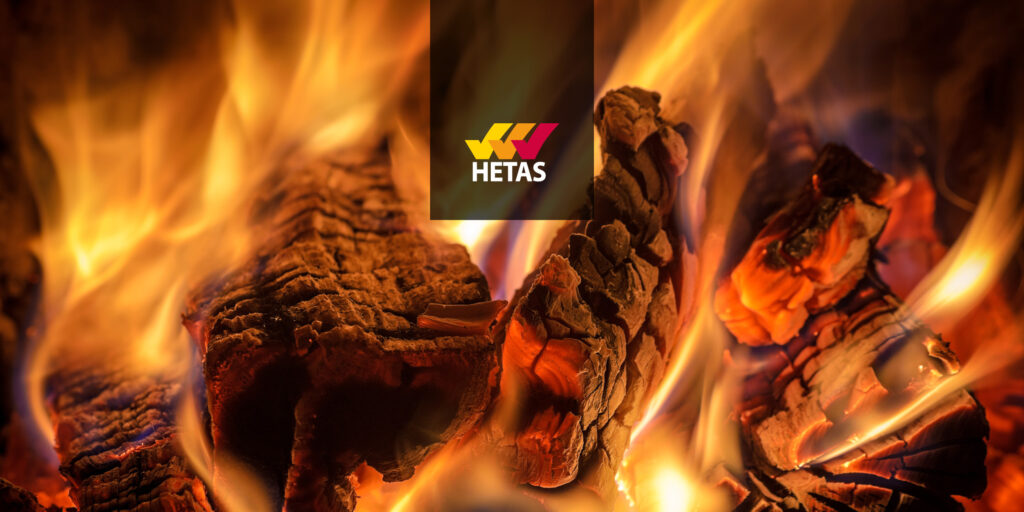
Working with Building Control
Working with Building Control (Appendix A) as part of Approved Document J
A recent roundtable hosted by HETAS revealed a number of issues that are affecting both the biomass and wood-burning stoves markets. One of the key areas of discussion was the issues surrounding the ‘signing off’ or ‘notification’ of solid fuel & biomass installations and the evident confusion over a HETAS installer’s role in assisting Building Control to sign off a job as being compliant to Building Regulations.
When looking to buy a home or secure buildings insurance for example, it is important to note that that existing installations must have been notified to Local Authority Building Control by the homeowner or by the builder/ installer concerned. This notification, or lack of to some degree, is being recognised as an area of concern which needs legislation and enforcing. The subject was discussed recently at a Government meeting. Those present including the Technical Director of Local Authority Building Control (LABC) and the relevant person from the Ministry of House, Communities and Local Government. As this is a matter that effects all areas where self-certification is an option, MHCLG subsequently wrote to the CEO’s of all Local Authorities.
A spokesperson for HETAS says, “If an installer is a registrant of a competent person self-certification scheme like HETAS, and the work undertaken is within their categories of competence, then they will notify through their scheme. However if the work undertaken by the installer is not within their recorded competence at the scheme, they cannot notify through their scheme. The only option is to go through Building Control at the local authority or in some cases via an approved inspector.”
HETAS acknowledges the wide range of skills that Building Control Officers have and the necessity for their continuous professional development. An increasing number of Local Authorities have taken the view that solid fuel and biomass training covering requirements within Approved Document J, its interaction with Approved Document F, other Approved Documents and associated Standards would be needed; upon taking this into consideration they have decided that this area of work would be best dealt with by people with specialist training and equipment.
HETAS say, “Where a Building Control Officer is unsure about the safety or compliance of a job, he/she might ask for supporting information from a HETAS registered installer. It is likely that the registered installer would say that they cannot sign off the work of another person. In cases such as these the installer would not be ‘signing off an installation’.
“There is a caution in that neither a HETAS Registrant nor a Building Control Officer can definitively appraise some areas of the work undertaken e.g. around the outside of the chimney liner or in places where there is no real access. Consequently the Building Control Officer would be asking the HETAS Registrant for their best endeavours, ensuring appropriate testing where practical so that he/she can advise the Building Control Officer.
“The HETAS installer would be simply checking as much as they reasonably can maybe visually, plus perhaps flue draft, smoke test or whatever is appropriate and advising the Building Control Officer of their findings.”
“It is then for the Building Control Officer to make a decision based on their own skills and experience, plus the supplementary information supplied by the installer.”
“This combination of skills and checks is considered to be a robust way to address the situation.”
HETAS add, “HETAS has not been involved in discussion about who bears the cost of such an inspection but it seems reasonable that the person having the work done might be responsible. Things are of course much clearer and simpler when a HETAS registrant undertakes the work and self-certificates to HETAS.”
“Should a Building Control Officer ask for assistance from a HETAS qualified installer to carry out an inspection to ascertain compliance they should use the form stated in Appendix A on page 70 of Approved Document J, because, ultimately the BCO is signing the job off and not the HETAS installer.”
“Indeed, not all of our registrants will remember that HETAS have an agreement with Local Authority Building Control permitting them to assist a Building Control Officer. Anyone seeking clarity or experiencing difficulties engaging help and support should contact HETAS technical helpline.”
“Installers are aware that whilst the space to fit an appliance is often limited – determined by the shape of the room or location of the chimney breast – there are other factors that must be considered to ensure that the appliance adheres to Part J of Building Regulations.”
“This section of Building Regulations, which outlines requirements for combustion appliances and fuel storage systems, is often referenced during our helpline conversations. For example, questions around the use of Chimneys and flues relate to the requirements for the discharge of products of combustion (J2) and protection of building (J4). These regulations and other relevant guidance including manufacturer’s instructions serve to ensure that products are installed compliantly, assuring end-users in the use of the installation”.
“It’s great to see our installers are paying such close attention to these requirements and taking them seriously by phoning for advice if the requirements are not clear for them,” say HETAS.
HETAS is proud to have support from various sectors and organisations in the industry. Working alongside industry organisations allows the technical team to provide the most up-to-date information and educated advice.
“Ultimately our aim is to be recognised as the go-to resource for any domestic heating related queries so that we can continue to encourage the improvement of products and promote high standards of quality, design, safety and efficiency.”
Contact the HETAS Technical Helpline to discuss this further on 01684 278170.



